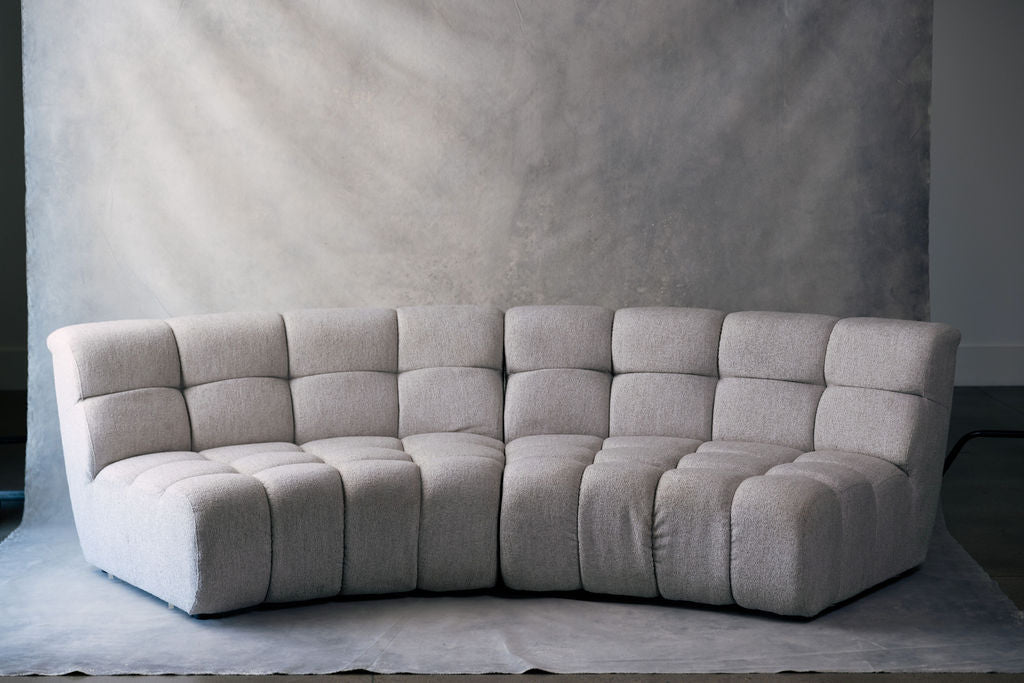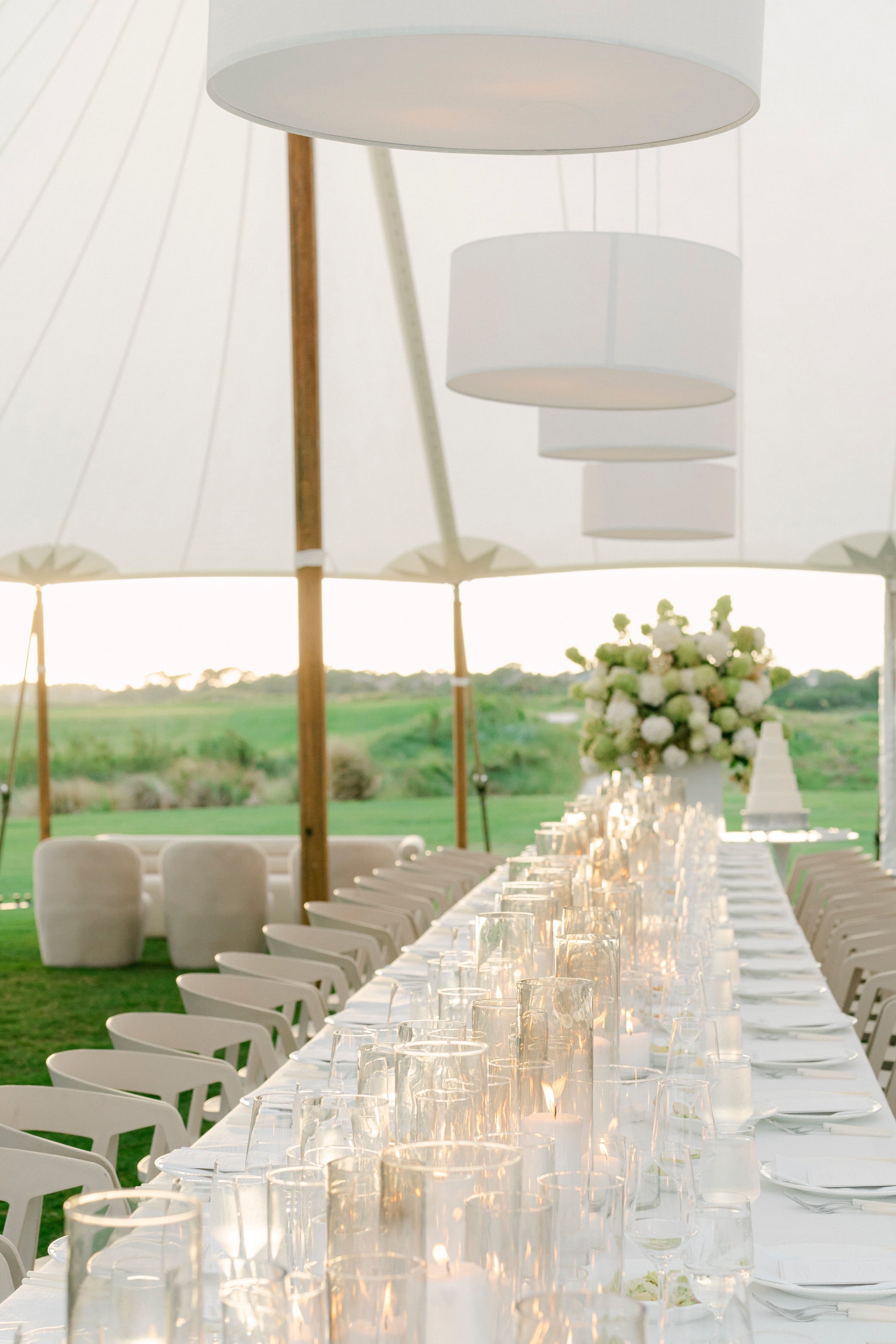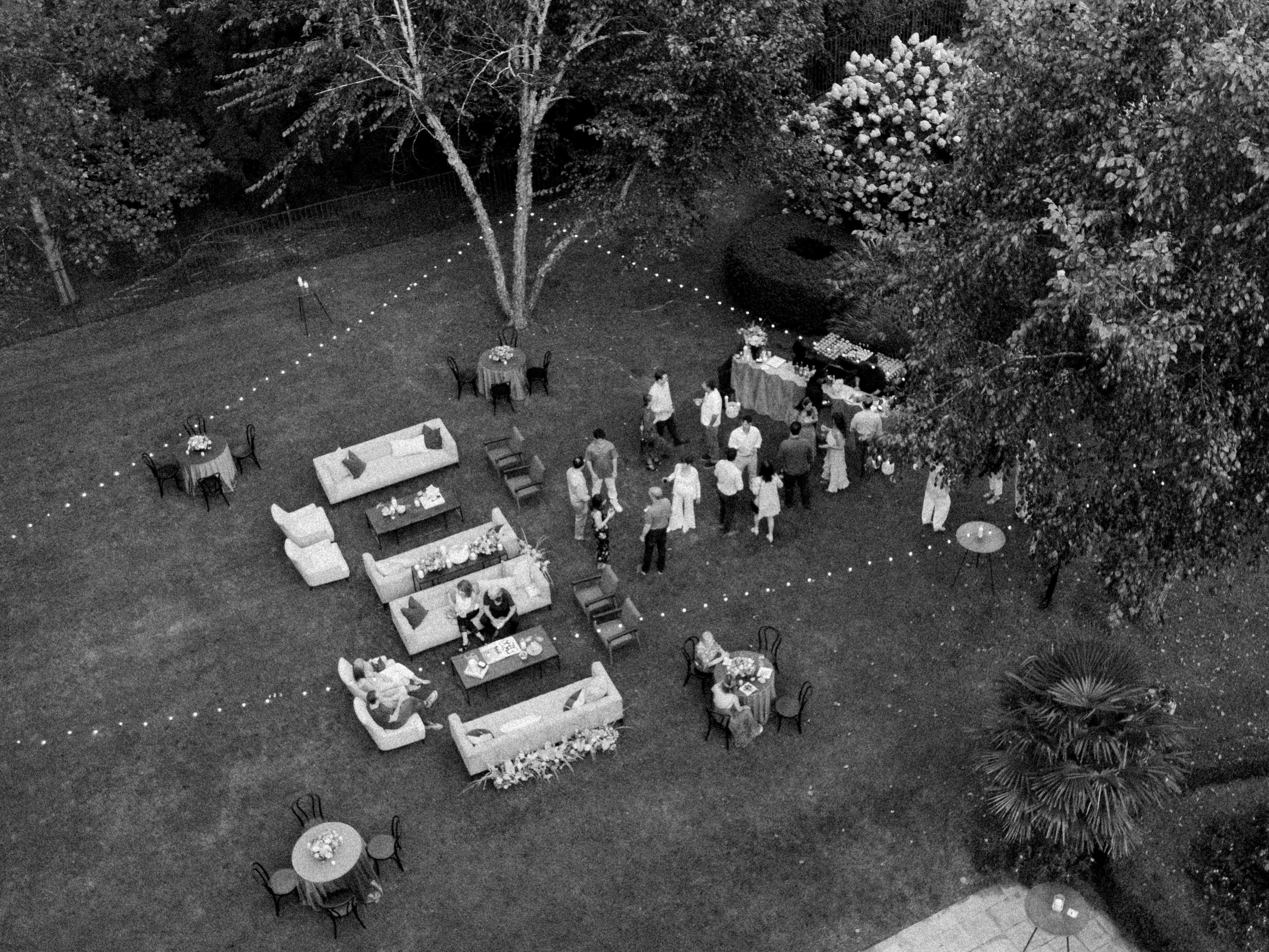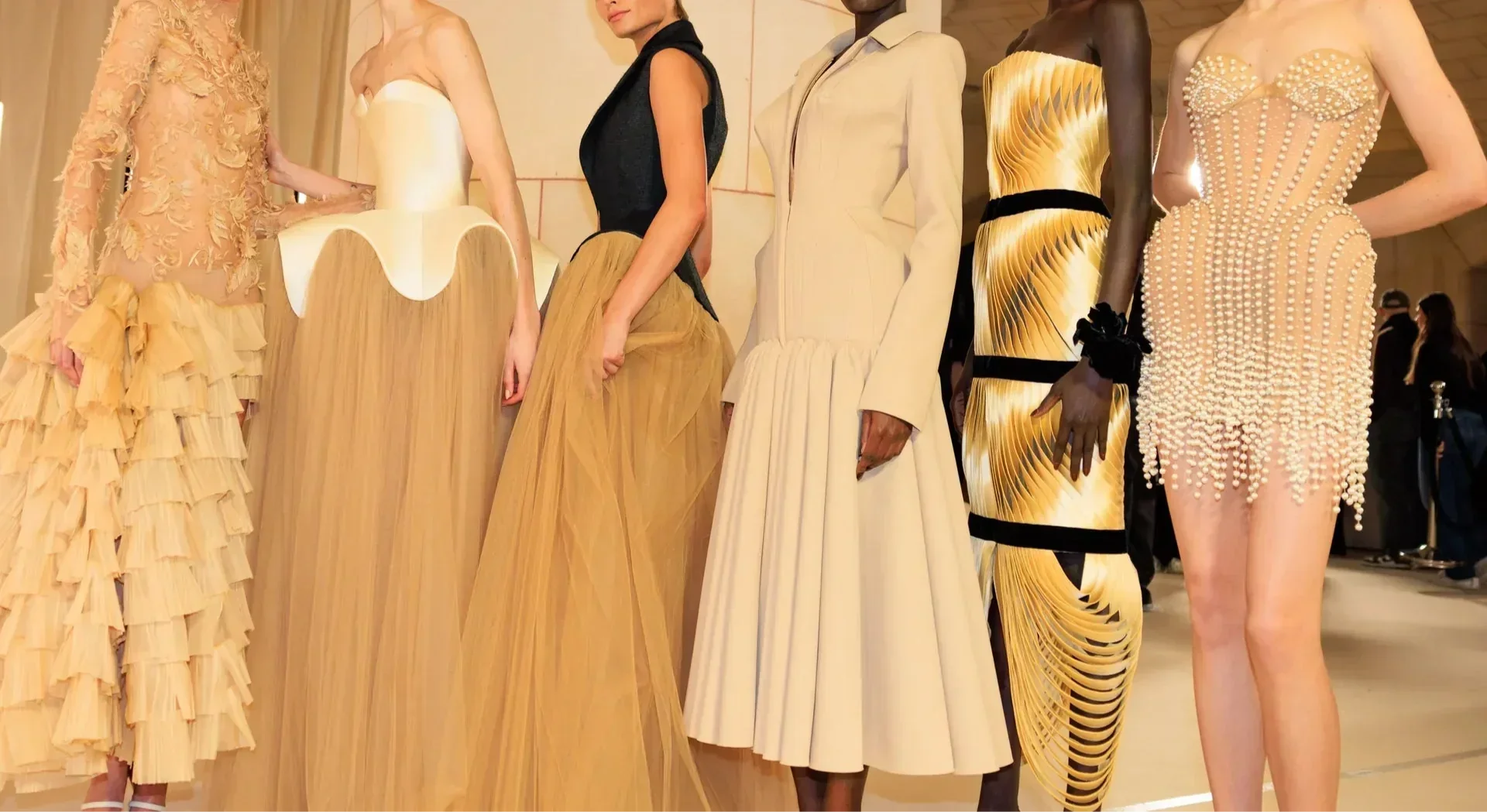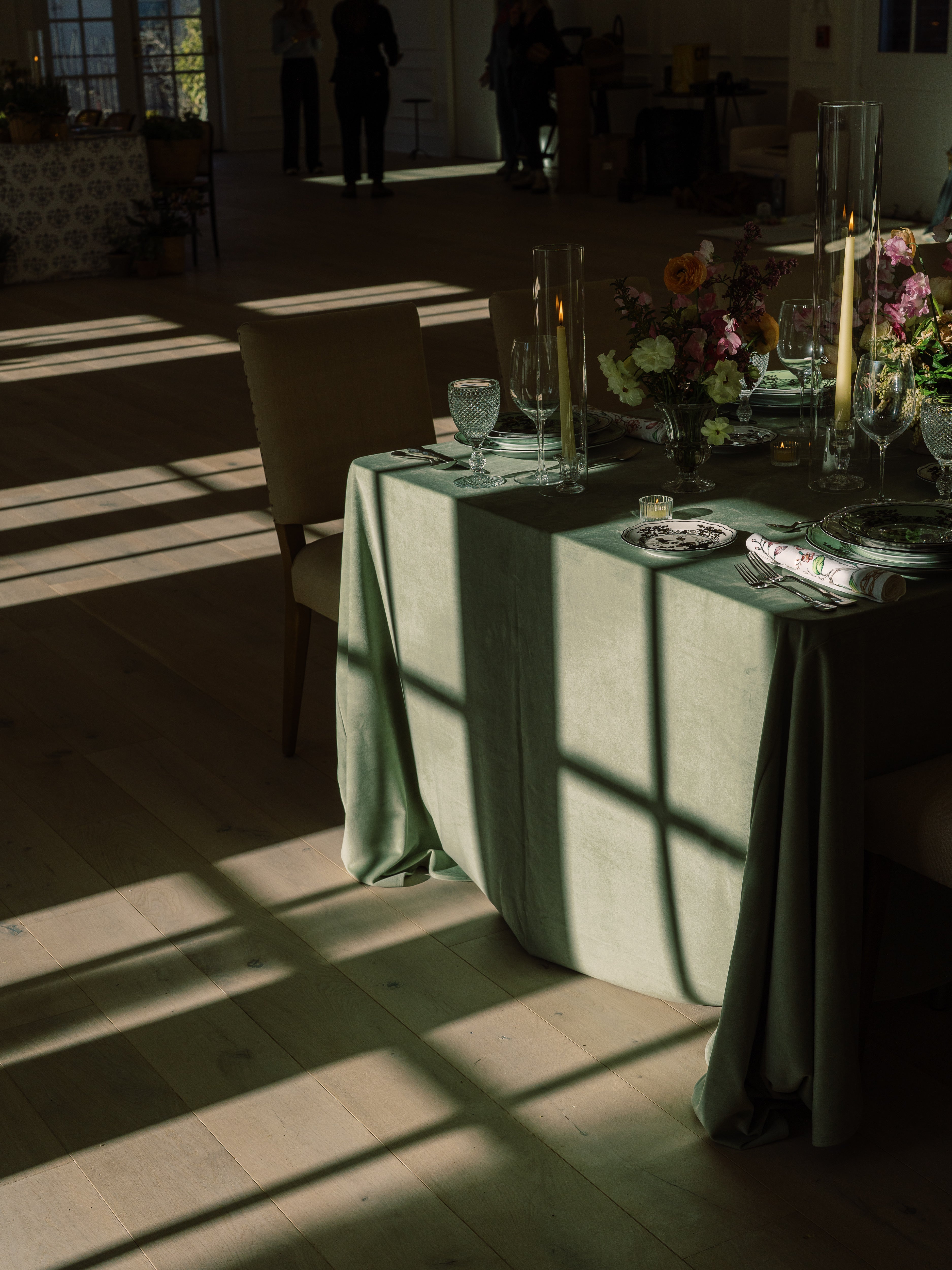A Softer Approach to Thematic Design
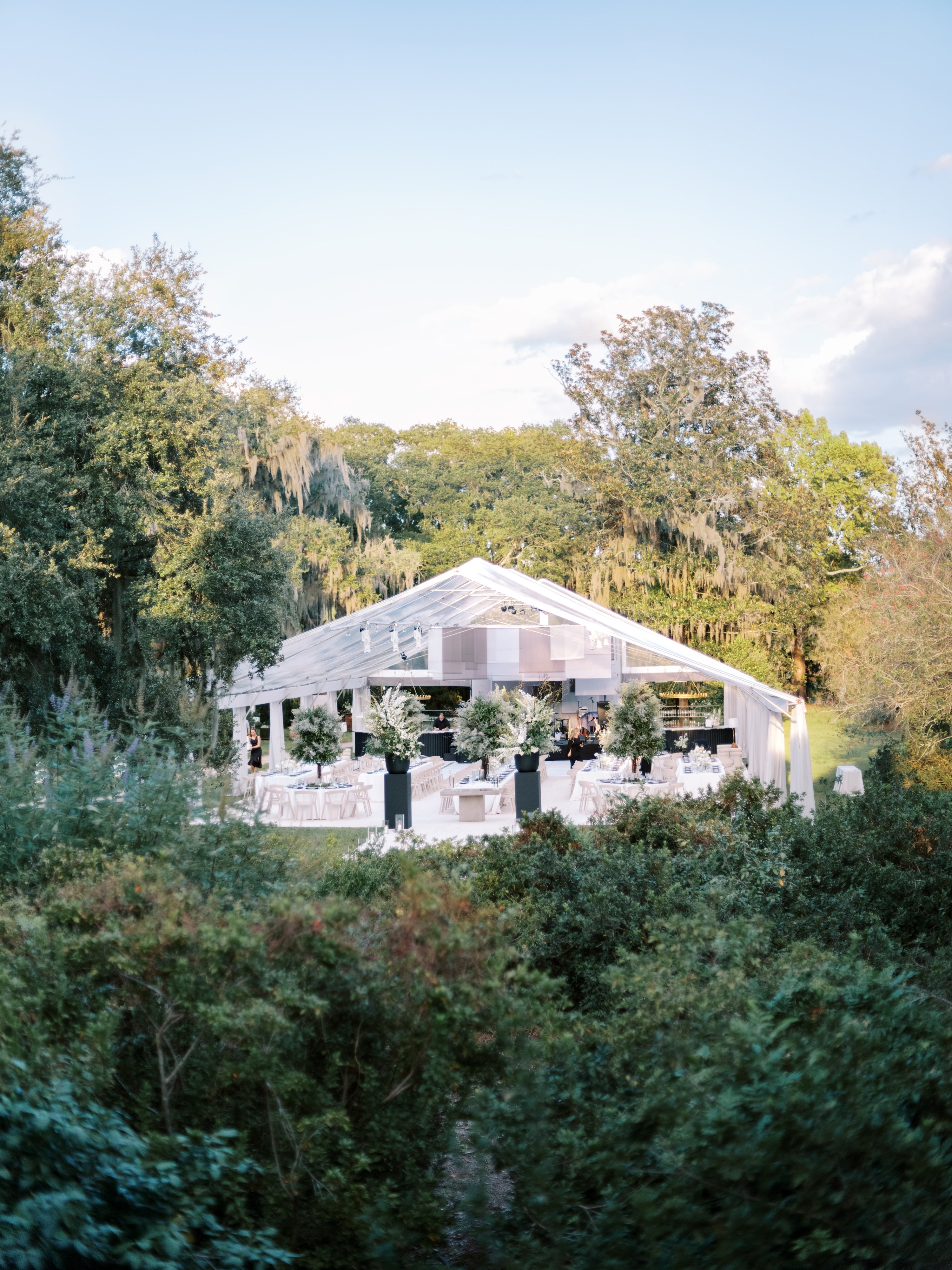
There's a moment in the lifecycle of every event when you have to decide: Are you going to tell the story, or are you going to let the space share it for you?
We've seen (and, admittedly, tried) both approaches. The first fills rooms with on-the-nose interpretations—champagne bottle centerpieces for a "bubbly brunch" or fake ivy walls for anything "garden-inspired." The second trusts that the right furniture, in the right arrangement, can convey the entire concept without saying a word.
We've learned—from working alongside planners who get it right—that the strongest themes work through suggestion, not declaration. They create a mood that lingers in your memory, but not because vinyl letters spelled out the concept on every surface.
Start with the feeling, not the keyword
The requests we get are often tied to specific themes: "Modern Gatsby," "California Tuscan," "1970s Social Club, but make it soft." It's an essential point of reference that always begs a follow-up question: What's the feeling you want people to walk away with?
Designing with a theme doesn't mean taking it literally. It means finding the emotion underneath it and using furniture, florals, and lighting to support that feeling.
Curves and rich velvet might nod to Art Deco glamour. A warm walnut cocktail table could reference California wine country. But you don't need fringe chandeliers or a faux grapevine arch to get there.
The magic happens when guests feel the concept without being told what it is.
Use furniture to hint, not hammer
Good event furniture tells the story quietly in the background; it doesn't need to announce itself.
A soft linen sofa in warm sand suggests an inviting garden setting. A lacquered credenza with sculptural florals on top leans retro without screaming "theme party." The right brass accent catches light like golden hour, even under event lighting at 7 PM.
It's all about the cue. The suggestion. The gentle nudge that lets your guests fill in the story themselves.
You can reflect an entire mood through shape, finish, and material—without needing to spell it out in signage or props.
Layer with intention, not excess
One of the benefits of working with design-forward rental furniture is that you don't need a lot of "extras" to make it feel complete.
Instead of reaching for decorative add-ons to clarify the theme, lean into materials and finishes. Leather, linen, rattan, glass—they all carry meaning. Pairing just two or three textures with consistent lines and a restrained color palette can communicate more than a room full of themed décor ever could.
Plus, your photographer will thank you. Spaces that rely on good bones and thoughtful editing always shoot better than ones drowning in literal interpretation.
Choose pieces with range
Behind the scenes, we're obsessed with building a collection that supports a wide range of aesthetic directions without feeling generic or trend-locked.
It's why we invest in sculptural pieces that work for both minimal and maximal moments. Why we pay attention to the grain of the wood, the shape of the leg, the tone of the upholstery.
You shouldn't need one furniture package for garden weddings and another for corporate dinners. You need pieces flexible enough to suggest different stories depending on how they're styled.
Versatility isn't about neutrality. It's about pieces smart enough to adapt to the story you're trying to tell.
Trust your guests—and your guts
If we could leave you with one thought, it's this: You don't have to explain the theme to make it work. You just have to suggest it with care.
Trust that your guests are perceptive enough to pick up on the cues. Trust that the right furniture, styled thoughtfully, can carry the entire concept without needing backup from props or signage.
We're here to help you make the room feel like it belongs to the moment—not because the décor told us so, but because every detail quietly agreed.
